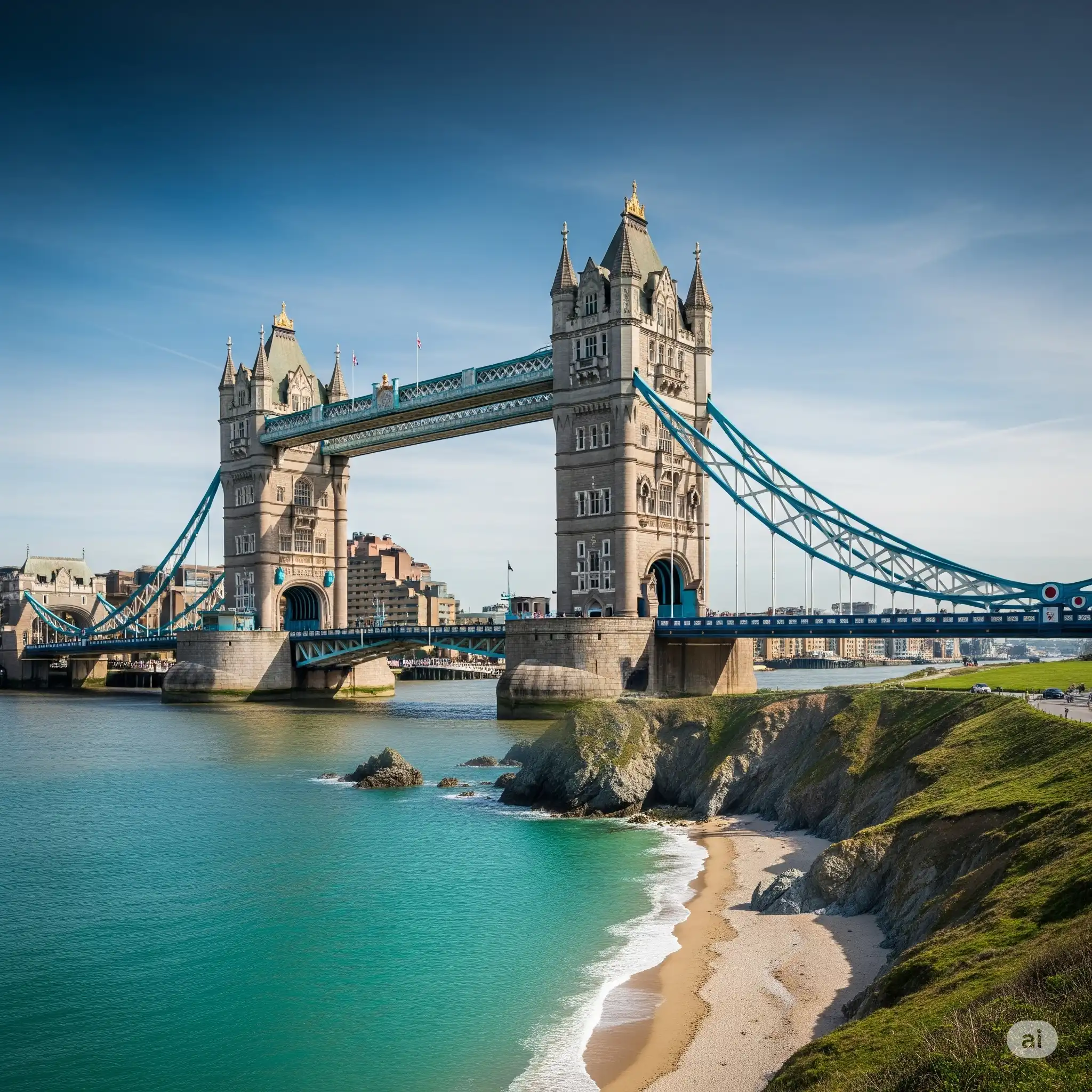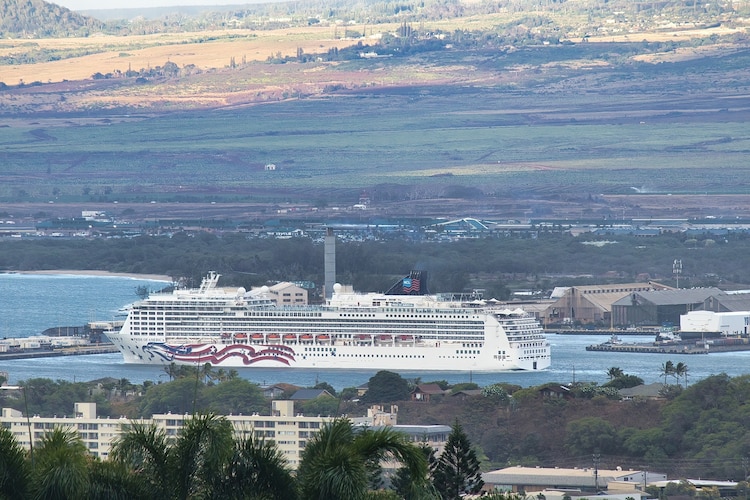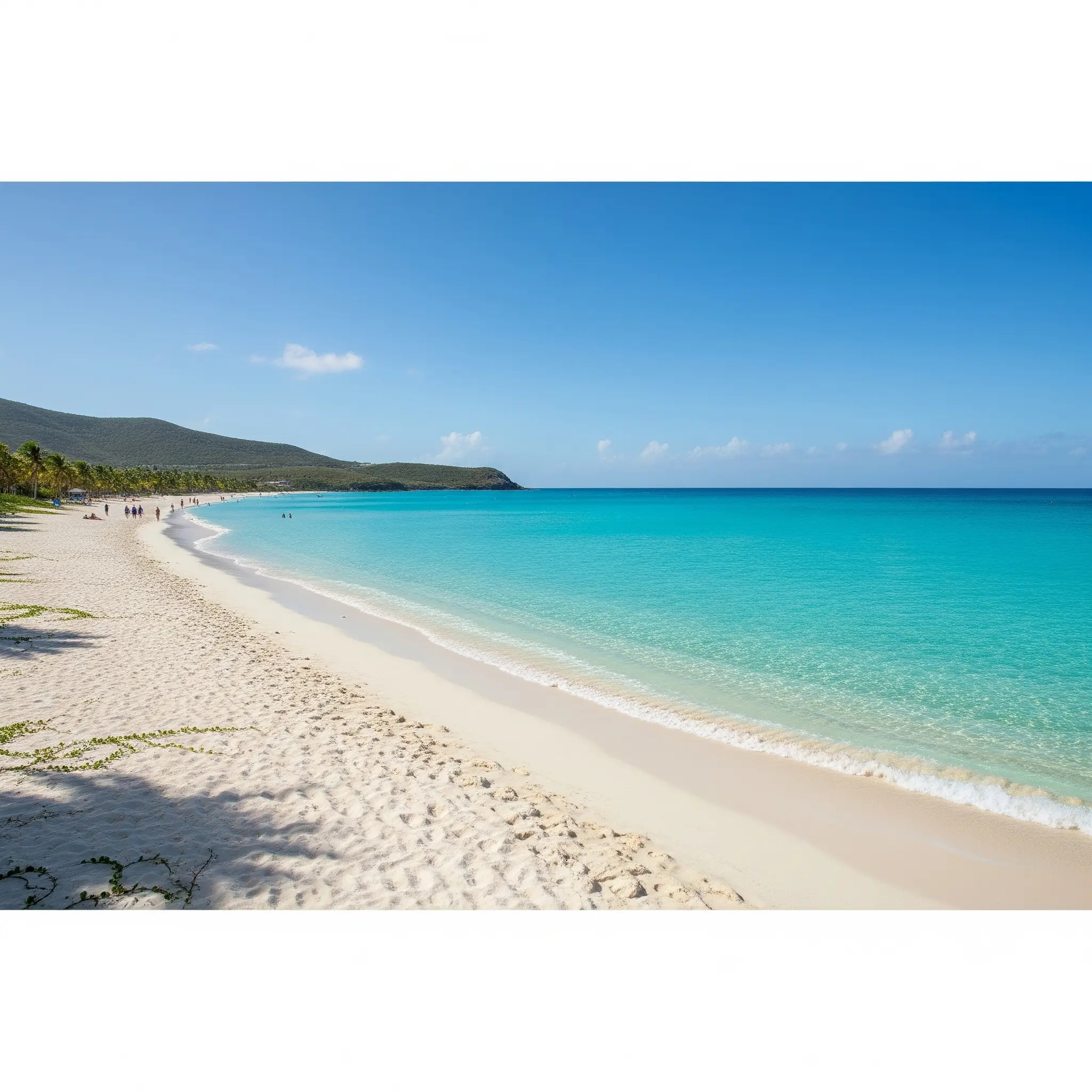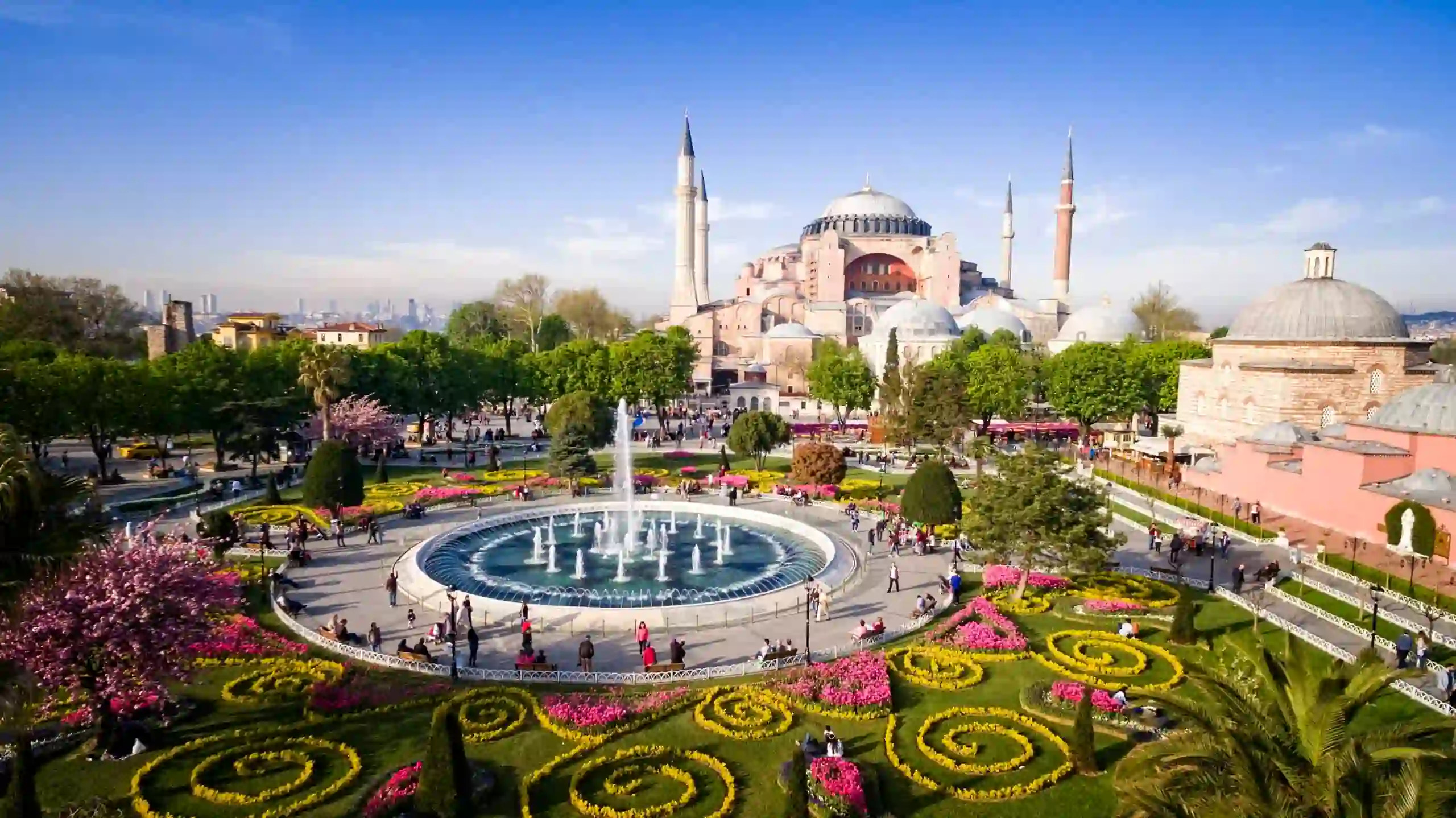
Top Destinations in Istanbul, Turkey – Istanbul, the vibrant metropolis that straddles two continents, is a city where the past and present coexist in perfect harmony. As the cultural and historical heart of Turkey, Istanbul offers a plethora of destinations that cater to every type of traveler. From ancient landmarks to modern marvels, the city is a treasure trove of experiences waiting to be discovered. In this article, we’ll explore the top destinations in Istanbul, highlighting their relevance to modern life and the innovative ways they continue to captivate visitors.
Table of Contents
Top Destinations in Istanbul, Turkey
1. Hagia Sophia, Turkey
Visit to Istanbul is complete without stepping inside the iconic Hagia Sophia. Originally built as a cathedral in 537 AD, this architectural masterpiece has served as a church, a mosque, and now a museum. Its massive dome, intricate mosaics, and towering minarets are a testament to the city’s rich history and cultural diversity.
In recent years, the Hagia Sophia has undergone significant restoration efforts, blending traditional craftsmanship with modern technology. Innovative lighting systems now highlight its stunning interior, while augmented reality (AR) apps allow visitors to visualize its transformation over the centuries. This fusion of history and innovation makes the Hagia Sophia a must-see destination for anyone visiting Istanbul.
2. The Blue Mosque, Turkey
Just a short walk from the Hagia Sophia, the Sultanahmet Mosque, commonly known as the Blue Mosque, is another architectural gem. Built in the early 17th century, the mosque is renowned for its stunning blue Iznik tiles and six towering minarets.
What makes the Blue Mosque particularly relevant today is its role as a functioning place of worship. Visitors can witness the daily prayers, offering a glimpse into the spiritual life of Istanbul’s residents. Additionally, the mosque’s courtyard has been transformed into a green space, reflecting the city’s growing emphasis on sustainability and urban ecology.
3. Topkapi Palace, Turkey

For a deeper dive into Istanbul’s, Turkey imperial past, head to the Topkapi Palace. This sprawling complex was the residence of Ottoman sultans for nearly 400 years and is now a museum showcasing priceless artifacts, including the Prophet Muhammad’s cloak and sword.
Innovative exhibits, such as interactive touchscreens and virtual reality (VR) tours, have been introduced to enhance the visitor experience. These technologies allow guests to explore the palace’s opulent rooms and gardens in unprecedented detail, making history come alive in a way that resonates with modern audiences.
4. The Grand Bazaar, Turkey
Step into the Grand Bazaar, one of the oldest and largest covered markets in the world, and you’ll find yourself immersed in a bustling labyrinth of over 4,000 shops. From handwoven carpets to intricate jewelry, the bazaar offers a sensory overload of colors, scents, and sounds.
In recent years, the Grand Bazaar has embraced e-commerce, with many vendors now offering online shopping options. This blend of tradition and innovation ensures that the bazaar remains a relevant destination for both local shoppers and international tourists. Additionally, the bazaar’s management has implemented eco-friendly practices, such as waste reduction and energy-efficient lighting, to minimize its environmental impact.
5. The Spice Bazaar, Turkey
Located near the Grand Bazaar, the Spice Bazaar is a must-visit for food enthusiasts. This vibrant market is filled with stalls selling an array of spices, teas, dried fruits, and Turkish delights. The aroma of saffron, cumin, and cinnamon fills the air, creating an unforgettable experience.
In response to the growing demand for organic and locally sourced products, many vendors now offer high-quality, sustainably produced goods. This shift not only supports local farmers but also aligns with the global trend toward healthier and more environmentally conscious consumption.
6. The Bosphorus, Turkey
The Bosphorus Strait is the lifeblood of Istanbul, separating the European and Asian sides of the city. A cruise along the Bosphorus offers stunning views of palaces, fortresses, and waterfront mansions, providing a unique perspective on Istanbul’s geography and history.
In recent years, eco-friendly boat tours have gained popularity, offering visitors a sustainable way to explore the strait. These tours often include educational components, such as information about the Bosphorus’s marine ecosystem and efforts to preserve its biodiversity. This focus on sustainability reflects Istanbul’s commitment to protecting its natural heritage while promoting tourism.
7. Galata Tower, Turkey
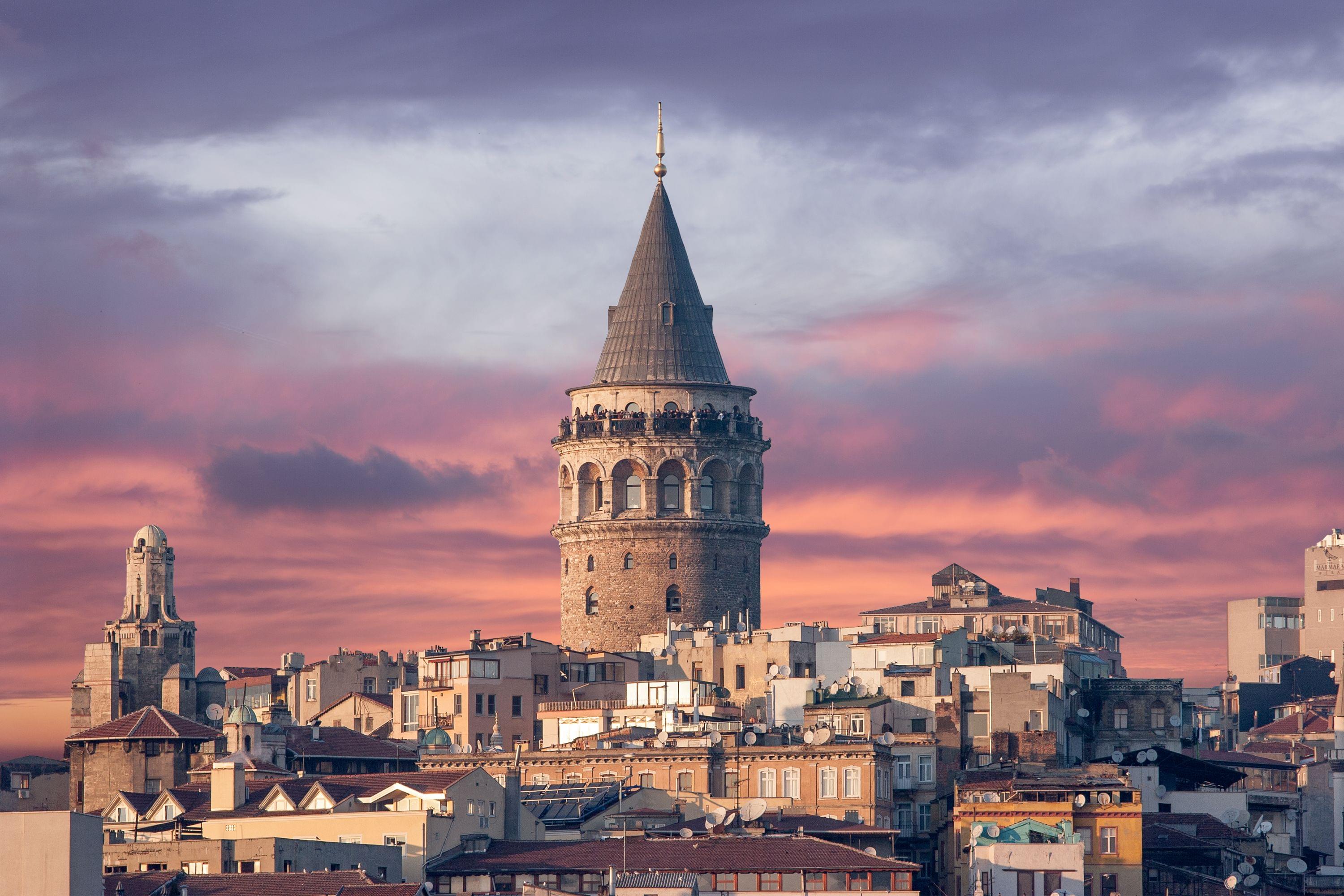
Standing tall in the Beyoglu district, the Galata Tower is one of Istanbul’s most recognizable landmarks. Built in the 14th century, the tower offers breathtaking panoramic views of the city, making it a favorite spot for photographers and romantics alike.
To enhance the visitor experience, the tower now features a multimedia exhibition that delves into its history and significance. This innovative approach not only educates visitors but also adds an interactive element to their journey, making the Galata Tower a must-visit destination for history buffs and casual tourists alike.
8. Istanbul Modern, Turkey
For those interested in contemporary culture, Istanbul Modern is the city’s premier museum of modern and contemporary art. Located on the shores of the Bosphorus, the museum showcases works by Turkish and international artists, offering a glimpse into the vibrant art scene of Istanbul.
The museum’s innovative exhibitions and programs, such as digital art installations and artist residencies, reflect the dynamic nature of Istanbul’s cultural landscape. By bridging the gap between tradition and modernity, Istanbul Modern plays a crucial role in shaping the city’s identity as a global cultural hub.
9. Basilica Cistern, Turkey
Beneath the bustling streets of Istanbul lies the Basilica Cistern, an ancient underground water reservoir built in the 6th century. This eerie yet fascinating site features rows of columns and dimly lit walkways, creating an otherworldly atmosphere.
Recent renovations have introduced state-of-the-art lighting and sound systems, enhancing the cistern’s mystical ambiance. These innovations, combined with guided tours that delve into its history, make the Basilica Cistern a captivating destination for history enthusiasts and curious travelers alike.
10. Princes’ Islands, Turkey
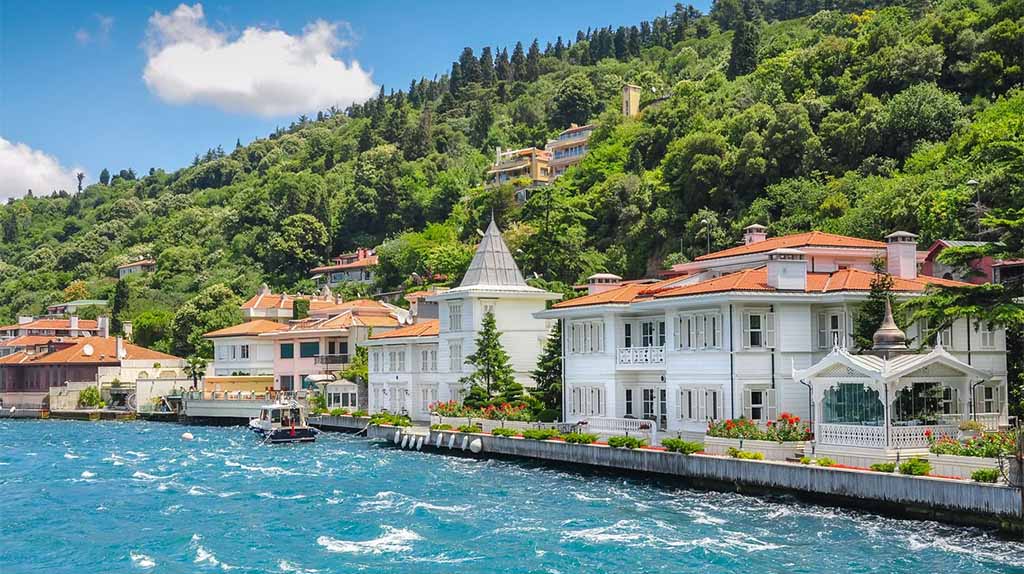
For a break from the city’s hustle and bustle, take a ferry to the Princes’ Islands, a group of nine car-free islands in the Sea of Marmara. Known for their tranquil atmosphere, pine forests, and Victorian-era mansions, the islands offer a peaceful retreat from urban life.
In recent years, the islands have become a model for sustainable tourism, with initiatives such as electric vehicle rentals and eco-friendly accommodations. These efforts not only preserve the islands’ natural beauty but also provide visitors with a unique and environmentally conscious travel experience.
The Princes’ Islands, or “Adalar” in Turkish, are a group of nine islands in the Sea of Marmara, near Istanbul. The name originates from the Byzantine period when princes and nobles were exiled to these islands. During the Byzantine era, the islands became sites for churches and monasteries, as well as places of exile for those considered political threats.
Among these islands, the four main inhabited ones are:
Büyükada

Büyükada: The largest island, formerly known as Prinkipo. In the 6th century AD, Byzantine Emperor Justinian II built a royal palace here.
Origins and Significance of Büyükada
Büyükada, meaning “Big Island” in Turkish, is the largest of the Princes’ Islands in the Sea of Marmara. The island has a long history dating back to the Byzantine era when it was used as an exile location for princes and nobles. During the Ottoman period, Büyükada became a favored summer retreat for Greek, Armenian, and Jewish communities.
The island is famous for its natural beauty, Ottoman-style wooden mansions, and the ban on motor vehicles, making it a unique travel destination that offers a peaceful and pollution-free environment.
Community Life and Tourist Attractions
Büyükada is home to several historical and cultural sites:
- St. George Monastery: A 6th-century religious site perched on a hill, offering stunning panoramic views.
- Trotsky’s House: The exile residence of Leon Trotsky between 1929-1933 after his expulsion from the Soviet Union.
- Beaches and Green Landscapes: Popular among visitors seeking tranquility away from Istanbul’s bustling city life.
Innovation and Technological Influence
In recent decades, Büyükada has embraced modernization:
- Eco-friendly transportation: Electric bicycles have replaced traditional horse-drawn carriages.
- Eco-tourism and conservation: Environmental preservation programs help maintain the island’s ecological balance.
- Digital promotion: Increased tourism awareness through social media and online platforms.
As one of Turkey’s most captivating destinations, Büyükada continues to preserve its charm while adapting to modern advancements.
Heybeliada
Heybeliada is the second-largest of the Princes’ Islands in the Sea of Marmara, near Istanbul. Its name derives from its saddle-like shape (Heybeli in Turkish). The island has played a significant role in both Byzantine and Ottoman history, serving as an exile location and a center for religious and educational activities.
One of its most notable landmarks is the Heybeliada Greek Orthodox Monastery, founded in the 9th century and once home to the Halki Theological Seminary, which closed in 1971.
Community Life and Tourist Attractions
Heybeliada offers a perfect blend of historical heritage and natural beauty:
- Heybeliada Monastery: A historical site symbolizing the island’s theological education legacy.
- İsmet İnönü House: The residence of former Turkish President, now a museum.
- Beaches and Hiking Trails: Visitors can explore the island’s serene environment, free from motorized vehicles.
Innovation and Technological Influence
The island continues to evolve with modern innovations:
- Eco-friendly transportation: Electric bicycles and small vehicles have replaced horse-drawn carriages.
- Eco-tourism and conservation: Efforts to preserve the island’s natural beauty.
- Digital tourism promotion: Increased visibility through digital platforms and social media.
Heybeliada remains a favorite destination for travelers seeking tranquility combined with a rich historical and cultural experience.
Burgazada
Burgazada is one of the Princes’ Islands in the Sea of Marmara, near Istanbul. Known for its tranquil atmosphere, historic wooden houses, and close-knit community, the island has a rich past. During the Byzantine era, it served as a place of exile, while in the Ottoman period, it became home to Greek and Armenian communities.
Burgazada is also renowned as the home of Sait Faik Abasıyanık, one of Turkey’s most famous literary figures, whose residence has been transformed into a literary museum.
Community Life and Tourist Attractions
The island offers a unique blend of natural beauty and cultural heritage:
- Sait Faik Abasıyanık Museum: The former home of the renowned writer, now a literary attraction.
- St. George Monastery: A historical religious site with breathtaking views.
- Beaches and Hiking Trails: Ideal for visitors seeking relaxation and nature.
Innovation and Technological Influence
Burgazada continues to embrace modern advancements:
- Eco-friendly transportation: Electric vehicles have replaced traditional horse-drawn carriages.
- Digital tourism promotion: Increased visibility through social media and online platforms.
- Environmental conservation efforts: Eco-tourism programs to maintain the island’s natural beauty.
As one of Turkey’s hidden gems, Burgazada retains its charm while integrating modern innovations.
Kınalıada
In 1984, the Princes’ Islands were declared a “natural, urban, archaeological, and historical preservation site,” with 899 registered monuments, making it an area of significant cultural and historical heritage.
Kınalıada is the smallest of the Princes’ Islands in the Sea of Marmara, near Istanbul. The name “Kınalı” means “henna-colored” in Turkish, referring to the island’s reddish rocky terrain. Historically, Kınalıada was frequently used as an exile location for Byzantine nobility.
The island has a smaller population compared to its counterparts and is known as a summer retreat for Istanbul residents, particularly the Armenian community, which has a long history here.
Community Life and Tourist Attractions
Kınalıada offers a unique blend of nature and tranquility:
- Hristos Monastery: A historic religious site located on the island’s highest hill.
- Beaches and Hiking Trails: Ideal for visitors seeking natural beauty and relaxation.
- Surp Krikor Lusavoriç Church: An important place of worship for the Armenian community.
Innovation and Technological Influence
Kınalıada continues to evolve with modern innovations:
- Eco-friendly transportation: Electric bikes and small vehicles have replaced traditional modes of transport.
- Digital tourism promotion: Enhanced visibility through social media and online platforms.
- Environmental conservation: Programs aimed at preserving marine and land ecosystems.
As a hidden gem near Istanbul, Kınalıada provides an authentic experience where history meets modern innovation.
Nearby Hotels in the Princes’ Islands, Turkey
The Princes’ Islands offer a variety of accommodations that blend modern comfort with historical charm. Here are some recommended hotels:
Splendid Palace Hotel
A luxury hotel offering stunning sea views and classic architecture.
Birun Ada Hotel
Provides comprehensive facilities with a cozy atmosphere and high-quality service.
Princes’ Palace Resort
A luxurious accommodation in Büyükada that combines classic elegance with modern amenities. Princes’ Palace Resort
Cenar Konak Butik Hotel
A boutique hotel with positive guest reviews, offering comfort and beautiful views.
Conclusion: Istanbul’s Enduring Allure
Istanbul is a city that seamlessly blends the old and the new, offering visitors a rich tapestry of history, culture, and innovation. From its ancient landmarks to its modern attractions, the city continues to evolve while staying true to its roots. Whether you’re exploring the grandeur of the Hagia Sophia, savoring the flavors of the Spice Bazaar, or cruising along the Bosphorus, Istanbul promises an unforgettable journey that resonates with the past, present, and future.
As Istanbul embraces sustainability and technological advancements, its top destinations remain relevant and inspiring for both locals and tourists. By visiting these iconic sites, you’ll not only witness the city’s rich heritage but also experience the innovative spirit that makes Istanbul a truly global destination.

